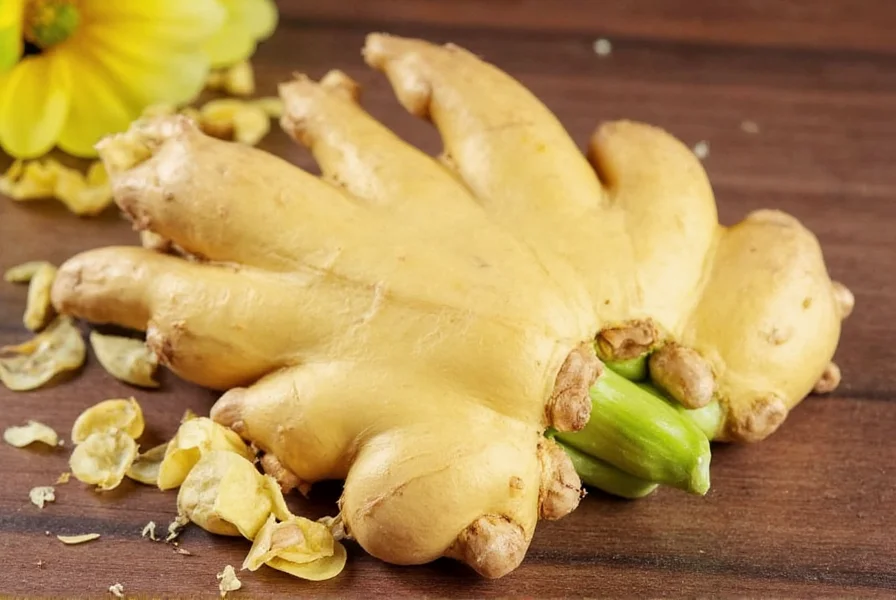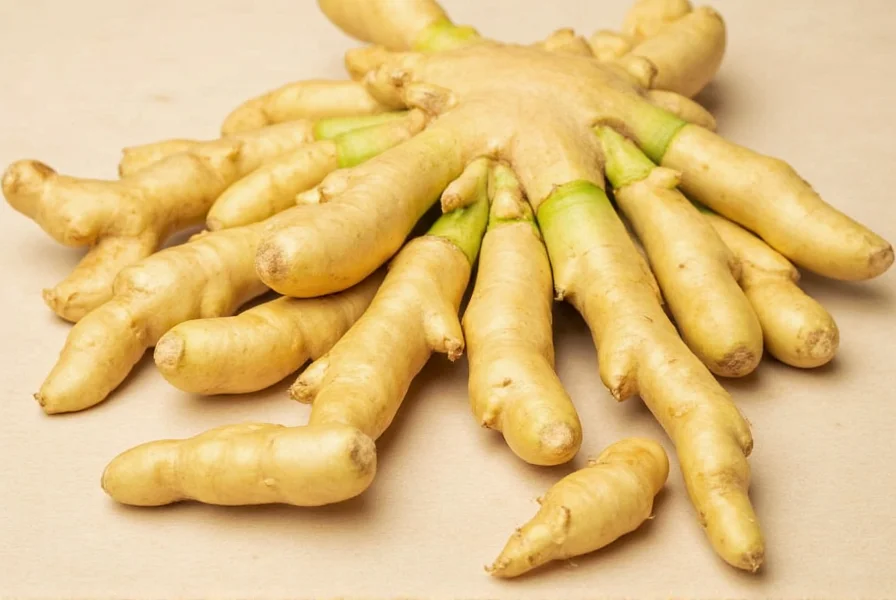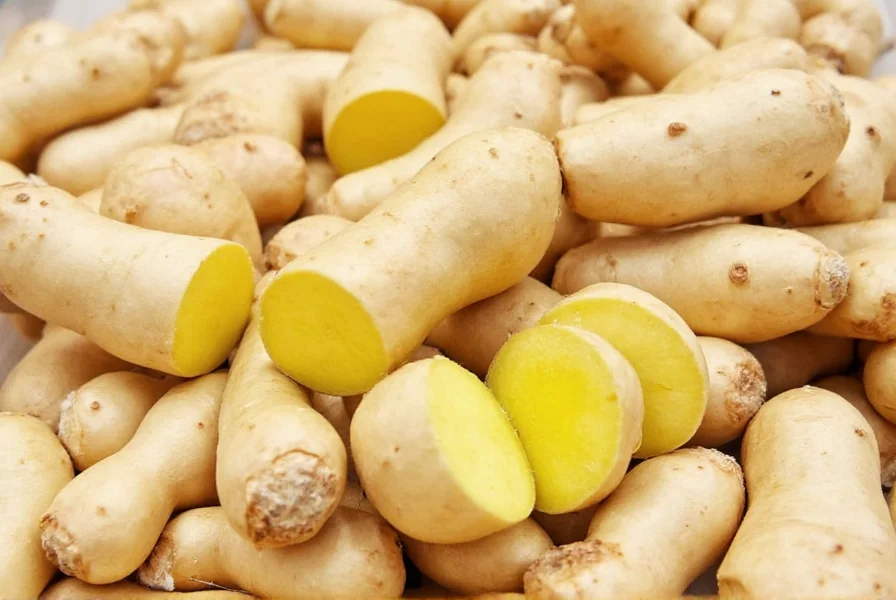The most effective way to store ginger roots depends on your usage timeline: for short-term storage (1-2 weeks), keep unpeeled ginger in a resealable bag with a paper towel in the refrigerator's crisper drawer; for long-term preservation (up to 6 months), freeze peeled ginger in an airtight container or freeze individual slices for easy use.
Proper ginger root storage preserves both flavor and nutritional value while preventing mold and spoilage. Whether you've bought a large quantity from the market or harvested your own, understanding the science behind ginger preservation helps maximize freshness and minimize waste. This comprehensive guide details evidence-based storage methods validated by food science research and culinary professionals.
Understanding Ginger Root Composition
Ginger's high moisture content (approximately 80%) makes it particularly susceptible to mold and dehydration. The rhizome contains volatile oils like zingiberene that provide its distinctive flavor but degrade when exposed to air, light, or improper temperatures. Successful storage focuses on controlling these three factors while maintaining the root's natural protective skin.

Short-Term Refrigeration Techniques
When stored correctly in the refrigerator, unpeeled ginger maintains quality for 2-3 weeks. Follow these professional chef-recommended steps:
| Storage Method | Duration | Effectiveness Rating |
|---|---|---|
| Original produce bag | 5-7 days | ★☆☆☆☆ |
| Open container | 7-10 days | ★★☆☆☆ |
| Sealed container with paper towel | 2-3 weeks | ★★★★☆ |
| Vacuum sealed | 3-4 weeks | ★★★★★ |
The paper towel method works because it absorbs excess moisture while maintaining humidity levels around 90-95%, which prevents both dehydration and mold growth. Replace the paper towel weekly for optimal results. Never wash ginger before refrigeration as this introduces additional moisture that accelerates spoilage.
Long-Term Freezing Methods
Freezing preserves ginger's flavor compounds for 4-6 months. Professional kitchens use these three approaches depending on intended usage:
- Whole root freezing: Peel and place in vacuum-sealed bags with minimal air. Ideal for grating directly from frozen.
- Slice freezing: Cut into 1/4-inch slices, freeze on parchment paper, then transfer to containers. Perfect for tea or cooking.
- Ginger paste: Blend with minimal water, freeze in ice cube trays, then transfer to bags. Ready-to-use portions for recipes.
Research from the Journal of Food Science shows frozen ginger retains 95% of its gingerol content (the primary bioactive compound) for up to six months when properly packaged. The key is eliminating air exposure which causes freezer burn and flavor degradation.

Dry Storage Alternatives
For those without refrigeration access, traditional preservation methods remain effective:
- Pantry storage: Place unpeeled ginger in a brown paper bag in a cool, dark place. Lasts 1-2 weeks but requires weekly inspection.
- Sand storage: Bury roots in clean, dry sand in a container. Mimics natural growing conditions and extends freshness to 3-4 weeks.
- Vinegar preservation: Submerge peeled slices in rice vinegar for pickled ginger that lasts 2 months refrigerated.
Identifying Spoilage and Safety Considerations
Discard ginger showing these warning signs:
- Soft, mushy texture (beyond normal flexibility)
- Dark yellow or gray discoloration inside
- Mold growth (even small spots indicate internal contamination)
- Sour or fermented smell
Unlike some vegetables, ginger doesn't develop harmful toxins when spoiling, but mold penetration makes surface cleaning insufficient. Proper storage prevents these issues by maintaining the root's natural antimicrobial properties.
Professional Chef Tips
Top culinary experts recommend these advanced techniques:
- Store ginger with the 'knuckle' end down to reduce moisture loss
- Keep ginger away from strong-smelling foods as it readily absorbs odors
- For immediate use, store at room temperature but use within 4-5 days
- Freeze ginger in oil for ready-to-use cooking portions
Frequently Asked Questions
Can you store ginger roots at room temperature?
Yes, unpeeled ginger can be stored at room temperature for 4-5 days in a cool, dark place. However, refrigeration extends freshness significantly. Room temperature storage works best when you'll use the ginger quickly, but monitor daily for soft spots or mold development.
How do you prevent ginger from molding in the refrigerator?
Prevent mold by storing unpeeled ginger in a resealable bag with a dry paper towel that absorbs excess moisture. Replace the paper towel weekly. Never wash ginger before storage as added moisture promotes mold growth. Keep it in the crisper drawer where humidity is controlled.
Is frozen ginger as good as fresh for cooking?
Frozen ginger retains nearly all its flavor compounds when properly stored. For most cooking applications, frozen ginger works equally well as fresh. The texture changes slightly when thawed, but for grating, soups, stir-fries, and teas, frozen ginger performs identically to fresh with the added convenience of ready-to-use portions.
Should you peel ginger before storing it?
No, always store ginger with the skin intact as it provides a natural protective barrier against moisture loss and mold. Peel only the portion you intend to use immediately. The skin contains valuable nutrients and helps maintain freshness during storage.
How long do ginger roots last in different storage conditions?
Properly stored ginger lasts: refrigerator (2-3 weeks), freezer (4-6 months), pantry (1-2 weeks), and pickled in vinegar (2 months refrigerated). The duration depends on maintaining optimal humidity levels and preventing exposure to air and light.











 浙公网安备
33010002000092号
浙公网安备
33010002000092号 浙B2-20120091-4
浙B2-20120091-4